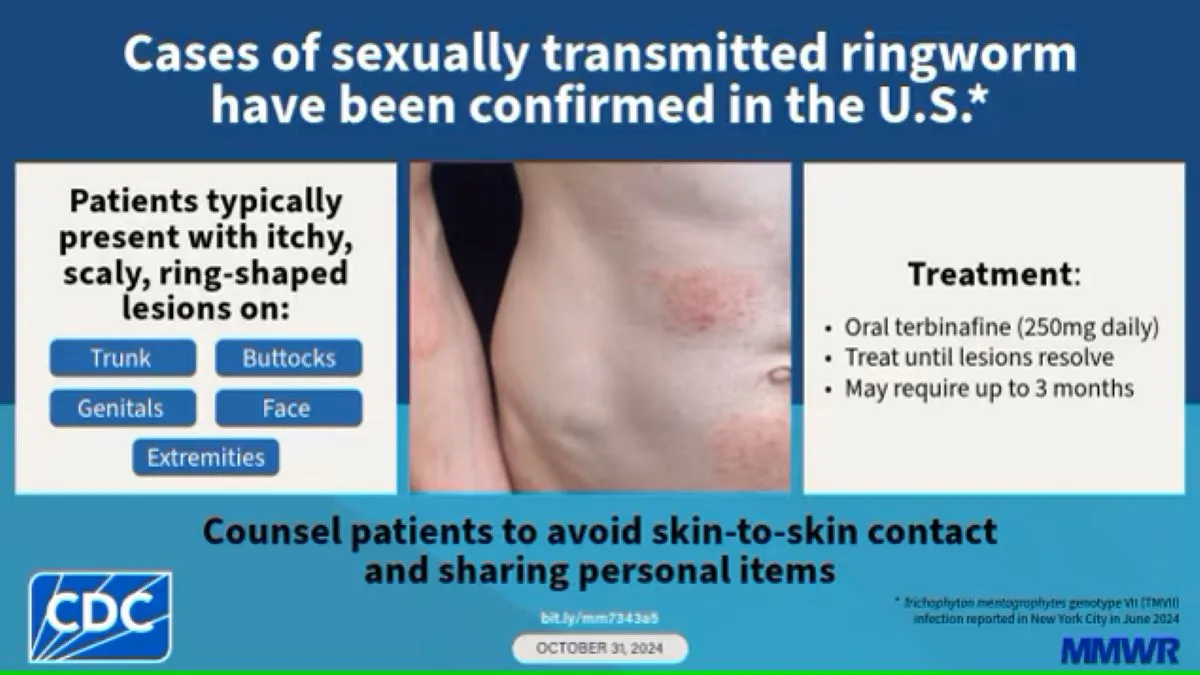The OC Health Care Agency (HCA) recently identified the first case of Trichophyton mentagrophytes (TMVII) in Orange County.
TMVII is a recently emerged cause of dermatophyte (e.g. ringworm, or tinea) infection and is transmitted via sexual contact.
Presentation involves inflammatory, sometimes painful, persistent skin lesions of the anogenital, buttocks, trunk, extremities, and perioral areas.
TMVII cases have been associated with resistance to topical antifungals and may require prolonged treatment courses with oral terbinafine. Cases which did not resolve with terbinafine and required itraconazole treatment have also been reported.
Routine culture may identify either T. mentagrophytes or T. interdigitale. Identification of TMVII requires specialized testing (e.g., ITS genome sequencing) available only at public health laboratories.
Recommendations for Healthcare Providers
- Providers should consider TMVII in individuals at risk for sexually transmitted diseases presenting with atypical (more severe or more extensive) skin disease.
- Skin scrapping can be used for microscopy with potassium hydroxide (KOH) preparation to visualize segmented hyphae to confirm fungal infection. Given the relatively low sensitivity of KOH preparation for the detection of dermatophyte infections, negative results should not preclude patients from treatment in highly suspicious cases.
- Fungal culture of skin scrapings can be used to identity fungal infection. Providers should request the isolate be speciated and saved for further testing. The HCA Communicable Disease Control Division (CDCD) should be contacted at (714) 834-8180, to assist in transmission of specimens to a laboratory that can identify TMVII via sequencing.
- Providers should treat empirically if TMVII is suspected. Terbinafine 250 mg once daily should be started and continued until the infection has resolved, which may take ≥ 6 weeks. If there is no clinical improvement with terbinafine after 2-4 weeks of treatment, consider referring the patient to an infectious disease specialist or dermatologist and switching to oral Itraconazole 200mg once daily.
- Patients with suspect or confirmed TMVII should be tested for HIV and syphilis. Testing for gonorrhea and chlamydia should also be considered depending on exposure history.
Additional Resources
CDPH Heath Advisory – Reports of Rare, Severe Dermatophyte Infections Associated with Sexual Contact in the United States 6/19/2024
American Academy of Dermatology – Trichophyton mentagrophytes genotype VII and other emerging dermatophytes of concern
For questions or concerns, providers can contact the OCHCA Communicable Disease Control Division at 714-834-8180.
